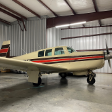Help me decide - Manual vs Electric Gear
-
Members Online
- IvanP
- 7.Mooney.Driver.0
- 47U
- Brian2034
- Justin Schmidt
- M20F
- RangerM20
- pkellercfii
- Guilly
- EricJ
- MikeOH
- GeeBee
- Wingfree
- UteM20F
- 201Mooniac
- testwest
- dkbe
- gwav8or
- AviH
- skyfarer
- Will.iam
- varlajo
- Marc_B
- 802flyer
- Skyland
- pirate
- chrisburdzy98
- redbaron1982
- LOCOLJ
- TGreen
- M20S Driver
- kaba
- Rocket_Driver
- LardLad
- ProtoFly
- Patrick Horan
- PeterRus
- 00-Negative
- Wingover
- hammdo
- dzeleski
- Jetdriver
- jma201
- Donut
- Rmnpilot


Recommended Posts
Join the conversation
You can post now and register later. If you have an account, sign in now to post with your account.